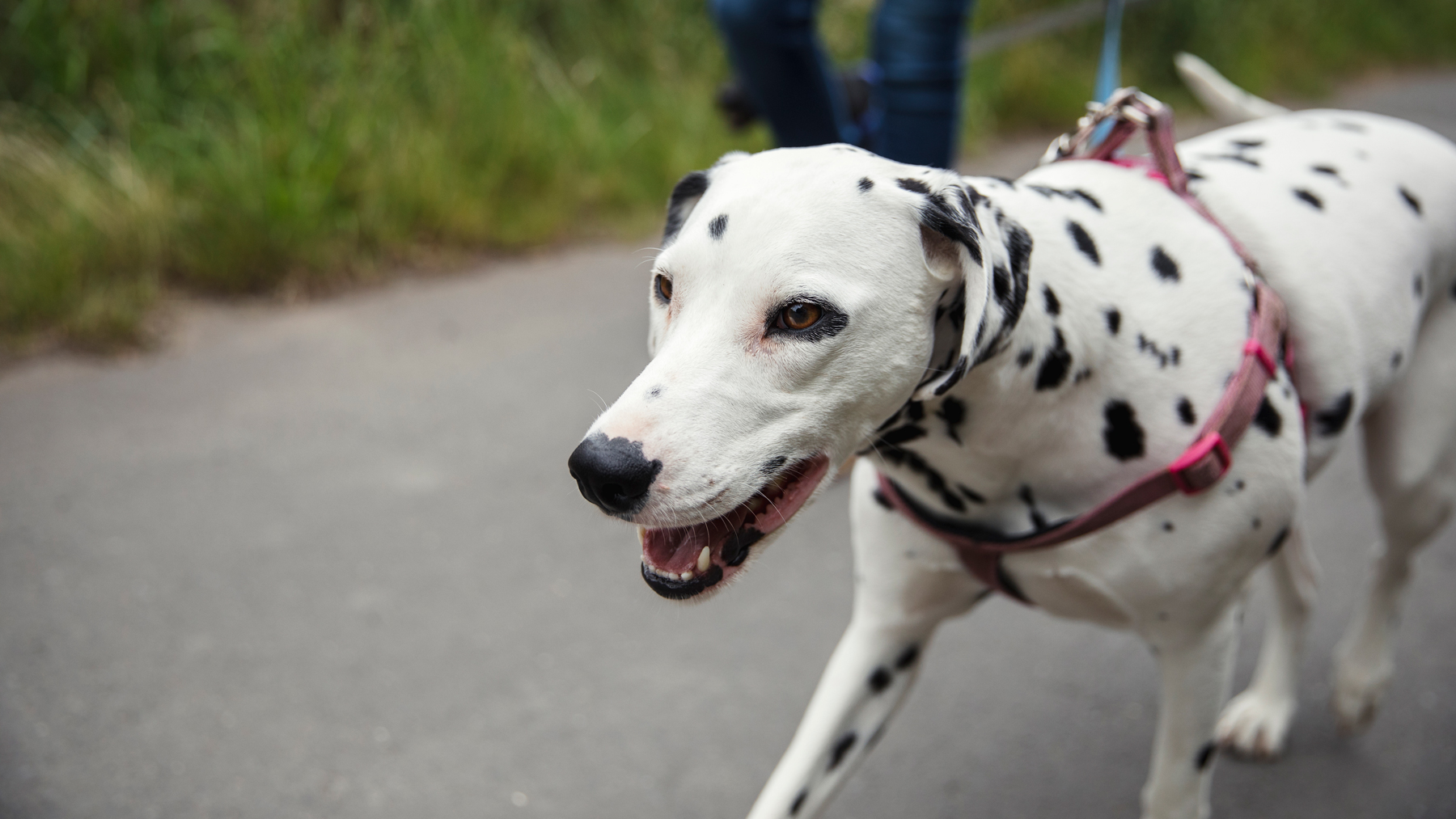Canine trainer shares two easy ways to manage reactivity and it all comes down to distraction
Certified dog trainer, Piper M Novick, shares effective distraction techniques to redirect your dog's attention from triggers

Walking a reactive canine can be very unpredictable, as various triggers can send them into a state of agitation or can cause anxiety in dogs.
Knowing how to calm a reactive dog is a great skill to have in the bank, but another one is knowing how to handle reactivity in the moment when your dog is responding to a distracting trigger. Thankfully, Piper Novick, certified professional dog trainer and owner of Happy Dogs Training, has shared two simple techniques that can make a world of difference.
Novick knows all too well that there can be various causes for reactivity in dogs, such as loud noises, other dogs, unfamiliar people, or even passing vehicles. These triggers can cause dogs to exhibit unwanted behaviors like barking, lunging, or pulling on the leash. This is why Novick emphasizes the importance of distraction as a key element in managing reactivity and preventing undesirable responses.
In a video shared on Instagram, she shows two distraction based games that she recommends using when a reactive dog is near a trigger. You can watch her demonstrate the games with a client’s dog below before reading on.
A post shared by Happy Dogs Training (@happydogstrainingnc)
A photo posted by on
Just a heads up, both methods require food rewards, so make sure you are stocked up on the best dog treats to keep your pooch engaged during your training!
One technique that Piper suggests is the 'Cookie Magnet' method. This approach involves switching your dog to the opposite side of the passing trigger, creating the necessary distance for your dog to remain calm and composed. With a generous handful of treats held directly in front of your dog's mouth, you allow them to continuously eat from your hand as you pass the trigger. "We want your dog to be magnetized to your hand as you pass the trigger," explains Novick.
Alternatively, Piper recommends the 'Cookie Scatter' technique. Similar to the first method, you switch your dog to the opposite side of the passing trigger and maintain the required distance. Instead of holding treats in your hand, you scatter a handful of treats on the ground for your dog to discover.
Novick notes, "If you have a scatter cue, like ‘find it’ or ‘search’, this is the time to use it!". By engaging your dog in the exciting task of finding scattered treats, you redirect their attention and help them associate triggers with positive experiences.
Before attempting these techniques outdoors, Piper advises practicing them indoors in a low-distraction environment. By doing so, you can ensure that focusing on you becomes the obvious choice for your dog.
Get the best advice, tips and top tech for your beloved Pets
As your dog becomes familiar with these actions, gradually introduce them to outdoor settings and eventually practice them around triggering stimuli. Remember to use high-value reinforcement, such as tasty treats, and maintain calm, deliberate, and gentle movements during the training process.

Jessica holds a journalism degree from Cardiff University and has authored articles for renowned publications, including PetsRadar, Fit&Well, LiveScience, Runner's World, The Evening Express, and Tom's Guide. Throughout her career in journalism she has forged connections with experts in the field, like behaviorists, trainers, and vets. Through her writing, Jessica aims to empower pet owners with accurate information to enhance their furry companions' lives.
